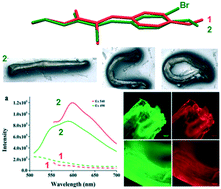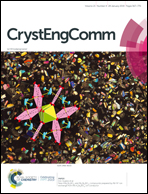Bromine–bromine interactions enhanced plasticity for the bending of a single crystal without affecting fluorescent properties†
Abstract
Ethyl 3-(3-bromo-4-methoxy-phenyl)-2-cyano-acrylate crystals exhibited very superior plasticity and shape persistent, self-standing properties compared to their non-bromo analogue. The crystal plasticity, controlled by a bromine–bromine interaction, has been found to play a crucial role in generating a slip plane and thus, under mechanical force, the crystals undergo bending without affecting their fluorescent properties.



 Please wait while we load your content...
Please wait while we load your content...